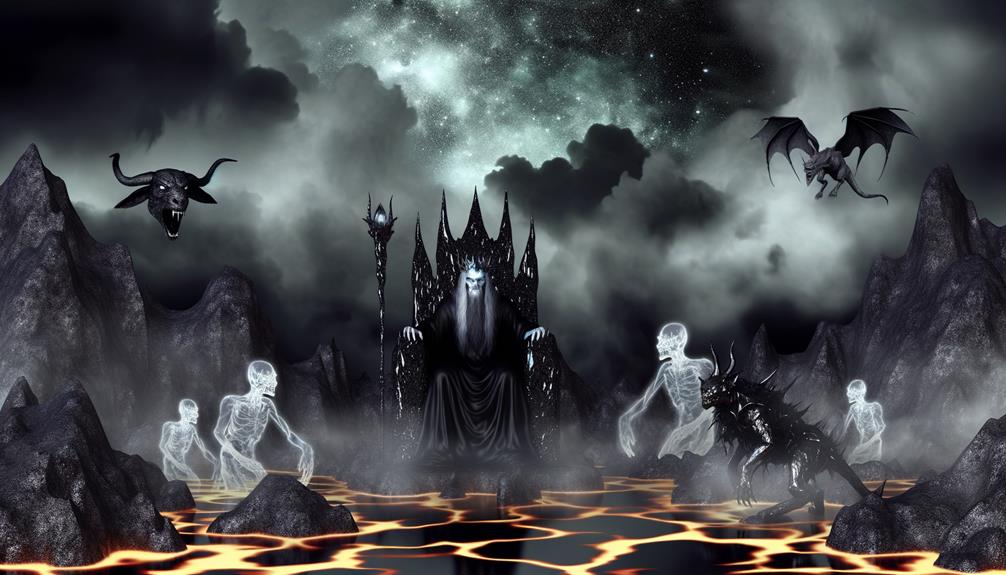Have you ever heard about Hades, the big boss of the Underworld in Greek mythology? He's mentioned more than 100 times in the ancient Greek epic poem, the Iliad. I've put in heaps of time trying to understand this mysterious god, creating a picture of a deity who often doesn't get the spotlight like his showier Olympian brothers and sisters.
As the god of the Underworld, Hades plays a crucial part in the grand scheme of things. He is respected and feared by both humans and gods. His kingdom, the Underworld, is an intricate and captivating place, full of dark landscapes and ghostly residents.
But what does Hades' territory include, and what does this say about him and his part in Greek mythology? This, my friend, is a story worth telling, don't you think?
Hades: The Underworld Sovereign

When you dive into the world of the Underworld, you can't overlook the key character that's Hades, the mighty god who not only governs this dark and enigmatic space but also keenly manages the transit and upkeep of human souls.
As the chief of the Underworld in Greek mythology, Hades is one and the same with the realm of the deceased. He's the boss, governing with absolute authority yet fairness in his shadowy kingdom.
You'd often find him portrayed as a solemn, dark, bearded ruler, brandishing powerful symbols like the Helm of Darkness and the bident. These hallmark items enhance his reputation as the god of the deceased and emphasize his supremacy among the Underworld gods. His kidnapping of Persephone and their subsequent matrimony, along with his intricate personality, add layers and fascination to the Greek mythology narrative.
Hades' reign over the underworld is undisputed, and his diligent upkeep and transit of mortal souls is a crucial part of the cosmic equilibrium. This sets Hades apart as not just a mighty god, but a central figure in the detailed operations of the underworld.
Understanding the Greek Underworld
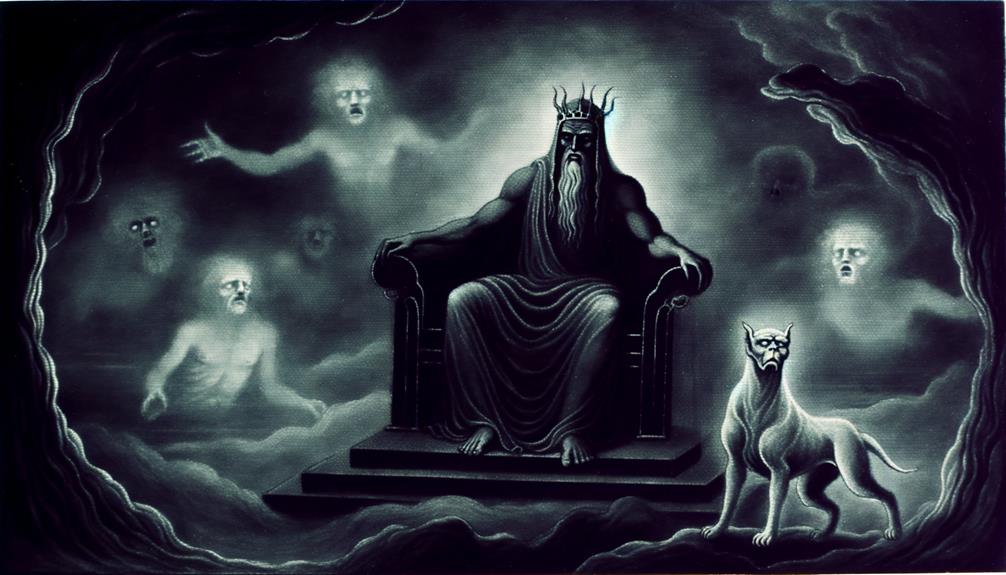
Unraveling the mysteries of Greek mythology, we find ourselves drawn into the fascinating world of the Underworld. This is a dark and mysterious place where powerful gods oversee the journey and care of human souls. This is the domain of Hades, the son of Cronus. He's one of the Olympian gods, and he rules here. His queen, Persephone, rules alongside him over the land of the dead, a duty he undertook when the universe was split between him, Zeus and Poseidon.
The Greeks saw this place as the final stop for every soul. It's not just a place filled with darkness and despair; comprehending the Greek underworld uncovers a sense of structure and order, marked by prominent places. The Rivers Styx and Acheron, Elysium, and Asphodel Meadows all play a unique role in the journey and care of souls.
Despite its daunting nature, the underworld is well-protected. Cerberus, the three-headed dog, guards its gates, making sure the dead can't leave and the living can't enter. This mysterious world reflects the Greeks' perception of life, death, and the soul's spiritual journey.
Hades' Abduction of Persephone
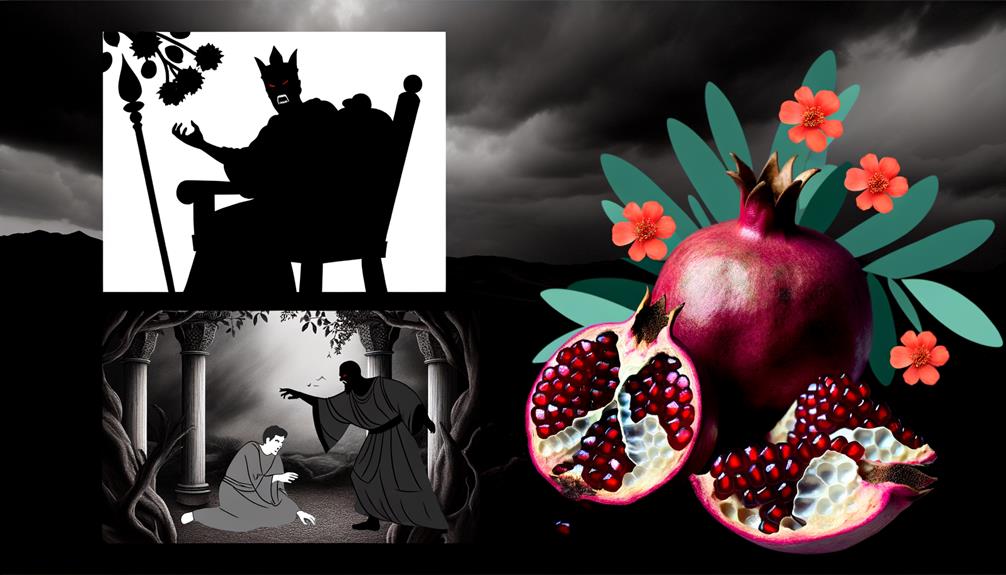
Let's delve into the intriguing world of Greek mythology, where we encounter a fascinating yet complex story – Hades' kidnapping of Persephone, a narrative that explains the cyclic nature of seasons. Hades, the ruler of the Underworld, fell head over heels for Persephone, the daughter of Demeter, and married her without her consent, sparking a bitter conflict between the land of the living and the dead.
This led to a series of significant events:
- In her sorrow, Demeter, Persephone's mother, brought a severe famine upon the earth.
- Zeus, moved by the suffering of mankind, managed to persuade Hades to let Persephone go.
- Hades agreed, but slyly gave Persephone a pomegranate seed to eat before she left, which tied her to the Underworld.
- As a result of eating the seed, she'd to return to the Underworld each year.
This cyclic journey is believed to represent the change of seasons. The joyful reunion of Demeter and Persephone symbolizes spring, while her annual return to the Underworld with Hades marks the beginning of winter. Therefore, the kidnapping did more than just bring Persephone back to the Underworld, it also had a profound impact on the rhythm of life on Earth.
Visitors and Lovers of Hades
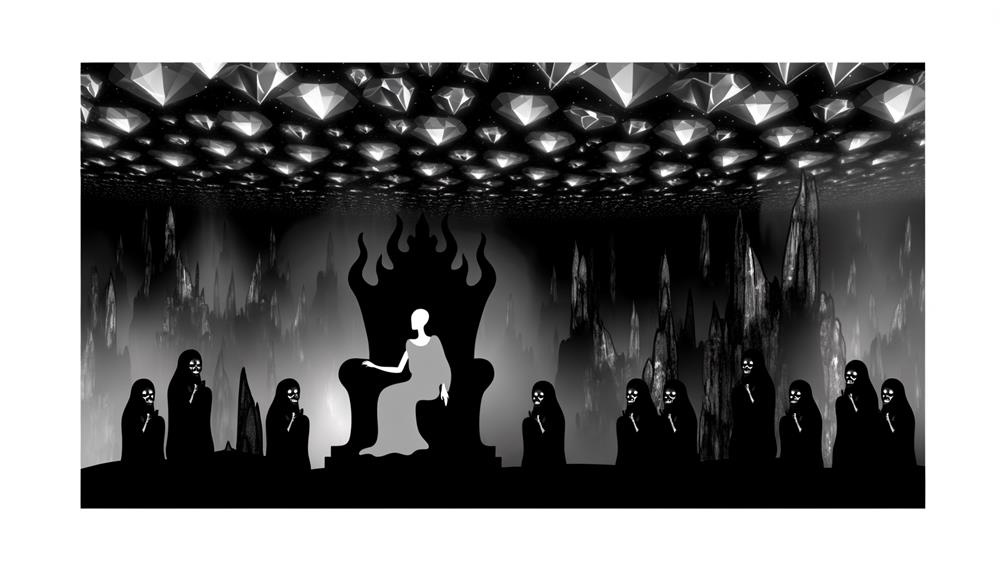
Persephone's seasonal trips to and from the Underworld set the pace of life and changes in climate on our planet. It's interesting to point out, though, she's not the only one to have ventured into this dark world. Heroes such as Orpheus, Odysseus, and Aeneas also took the risk of stepping into Hades' territory, each with their unique motivations and stories.
Orpheus, through his beautiful music, managed to convince Hades to let his wife Eurydice come back to the world of the living. But, when Orpheus couldn't stop himself from looking back, hoping to catch a glimpse of Hades' world disappearing, he lost Eurydice forever.
Odysseus, using the Key of Hades, made his way to the Underworld to get some wisdom from the prophet Tiresias. Tiresias was deemed by Hades to be worthy of keeping his sanity even after death.
Aeneas, with some help from his father Zeus, went into this dark world to figure out what his fate held.
However, not everyone who came was welcome. Theseus and Pirithous, who'd the audacity to plan to kidnap Persephone, were given a stern punishment by Hades.
The relationship between Hades and Persephone wasn't just about a kidnapper and his victim. When she became his wife, Persephone also became the queen of the Underworld, ruling it with her husband. This shows the intricate relationships among those who visited and loved Hades, with Zeus, his brother, also playing a vital role.
Artistic Representations of Hades' Realm
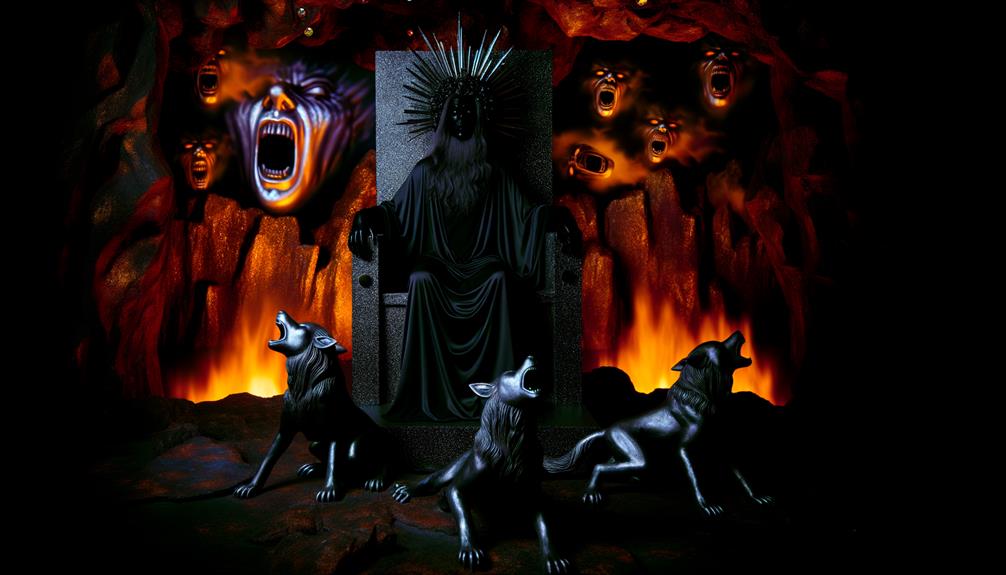
Let's take a closer look at the artistic portrayals of the Underworld, ruled by Hades. This realm, typically depicted as a somber and enigmatic territory, is governed by mighty deities and serves as the dwelling of departed souls. Often perceived as the final destination for humans, this domain is distinctly separate from the celestial sphere, where deities such as Zeus engage in their conflicts.
Artistic portrayals of Hades' domain have been molded by various inspirations. To gain a better understanding, keep these four points in mind:
- Hades is commonly shown on the red-figure amphora armed with a bident and helmet, emblematic of his dominion.
- The Underworld is typically separated into regions like Elysium, Asphodel Meadows, and Tartarus, each possessing unique qualities.
- The place of worship dedicated to Styx, who embodies the river that divides the living from the deceased, is a recurrent theme.
- There are 68 specific places within Hades' domain, such as Erebos and the Chaos Gates.
These artworks, shaped by the stories of Cronus and Rhea, the parents of Hades and other gods, offer insights into the intricate nature of the Underworld and its ruler.
Frequently Asked Questions
What Realm Did Hades Rule?
In the world of Greek mythology, Hades was the boss of the Underworld, this place that's home to those who have passed on. It's quite the enigma, filled with the spirits of the departed. With his powerful role, he had a firm grip on everything happening there and flexed his authority over its residents.
What Are the 4 Realms of the Underworld?
The underworld, in mythology, is divided into four fascinating sections. Elysium is like a tranquil sanctuary, Asphodel Meadows is an area that doesn't lean towards good or evil, Tartarus is notorious for its torment, and the last one is overseen by Hades himself, where he takes care of maintaining equilibrium.
What Are the Three Realms of Hades?
When it comes to Greek mythology, we can chat about three significant places. The first one, Elysium, is a haven for those who lived a virtuous life. The second, Asphodel Meadows, is a spot for souls that were neither particularly good nor bad. The third, Tartarus, is a terrifying spot reserved for punishing the wicked.
What Is the Underworld in Hades?
From what I've gathered, the Underworld in Hades is a shadowy, mystical location. This is the spot where mortal souls end up post-death, supervised by gods. This place is brimming with diverse rivers and spots, each with a unique role in the afterlife.
Conclusion
Alright, let's dive into the eerie world of Hades, the god of death and all things underworld. This is a place filled with mystery and a fair share of creepiness.
We've taken a look at his infamous act of kidnapping Persephone and discussed his select few guests and lovers. Through various art forms, we've had a peek into this enigmatic kingdom.
It's a sobering thought, realizing that even in death, there's a force overseeing our journey, a 'final stop' so to speak. Hades reminds us that every ending is just a fresh start in the continuous circle of life.

